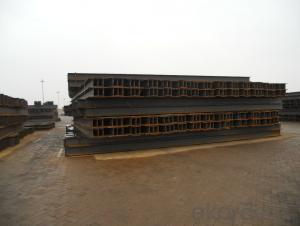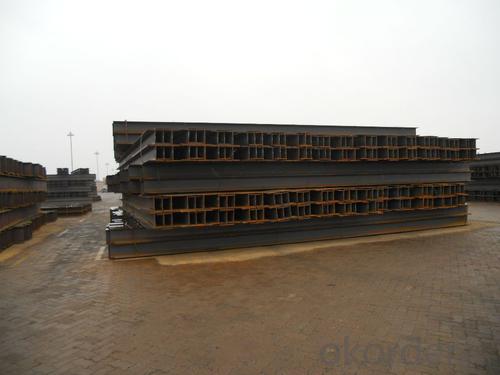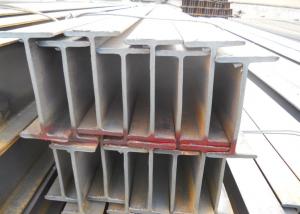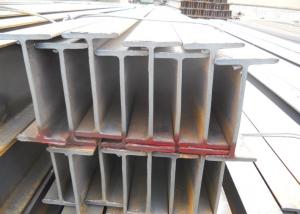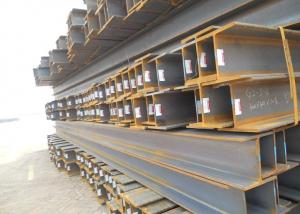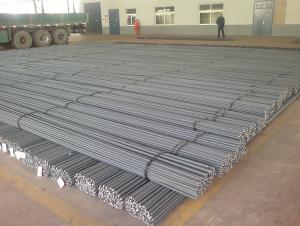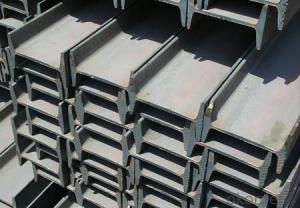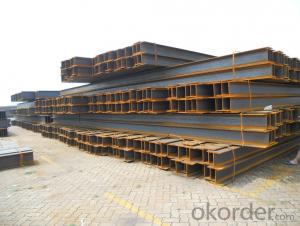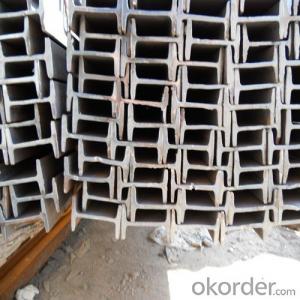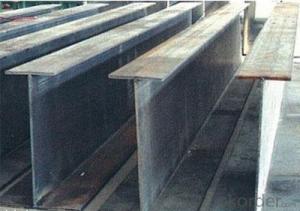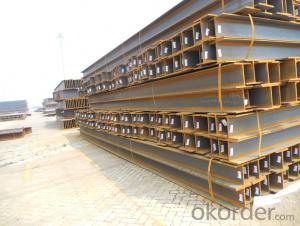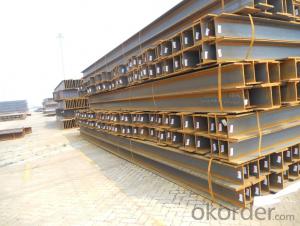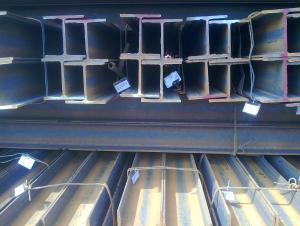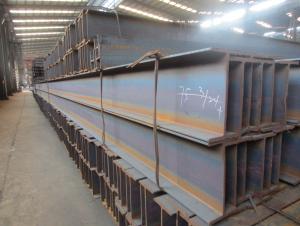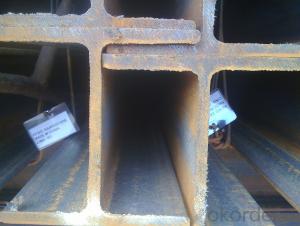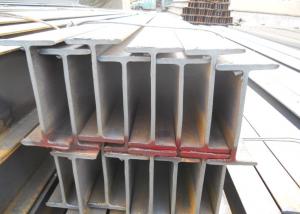Hot Rolled Steel H-BEAM JIS SS400 GB Q235
- Loading Port:
- Tianjin
- Payment Terms:
- TT OR LC
- Min Order Qty:
- 500 m.t.
- Supply Capability:
- 5000 m.t./month
OKorder Service Pledge
OKorder Financial Service
You Might Also Like
Specification
Product Description:
OKorder is offering Hot Rolled Steel H-BEAM JIS SS400 GB Q235 at great prices with worldwide shipping. Our supplier is a world-class manufacturer of steel, with our products utilized the world over. OKorder annually supplies products to European, North American and Asian markets. We provide quotations within 24 hours of receiving an inquiry and guarantee competitive prices.
Product Applications:
Hot Rolled Steel H-BEAM JIS SS400 GB Q235 are ideal for structural applications and are widely used in the construction of buildings and bridges, and the manufacturing, petrochemical, and transportation industries.
Product Advantages:
OKorder's Hot Rolled Steel H-BEAM JIS SS400 GB Q235 are durable, strong, and resist corrosion.
Main Product Features:
· Premium quality
· Prompt delivery & seaworthy packing (30 days after receiving deposit)
· Corrosion resistance
· Can be recycled and reused
· Mill test certification
· Professional Service
· Competitive pricing
Product Specifications:
Specifications of Hot Rolled Structural Steel H Beam
1. Standard: GB700-88, Q235B2.
2. Grade: Q235, SS400 or Equivalent
3. Length: 6m,10m, 12m as following table
4. Invoicing on theoretical weight or actual weight as customer request
5.Payment: TT or L/C
6. Sizes:
Size (mm) | Mass (Kg/m) | Size (mm) | Mass (Kg/m) |
294*302*12.0 | 83.4 | 300*305*15.0 | 105 |
300*300*10.0 | 93.0 | 346*174*6.0 | 41.2 |
Usage of Prime Hot Rolled H Beam Steel :
(1). for the plant, high-rise building construction
(2). for the bridge, shipment building
(3).for lifting and transportation machinery, equipment manufacturing base building
(4). for the support, foundation pile manufacturing
FAQ:
Q1: Why buy Materials & Equipment from OKorder.com?
A1: All products offered byOKorder.com are carefully selected from China's most reliable manufacturing enterprises. Through its ISO certifications, OKorder.com adheres to the highest standards and a commitment to supply chain safety and customer satisfaction.
Q2: How do we guarantee the quality of our products?
A2: We have established an advanced quality management system which conducts strict quality tests at every step, from raw materials to the final product. At the same time, we provide extensive follow-up service assurances as required.
Q3: How soon can we receive the product after purchase?
A3: Within three days of placing an order, we will begin production. The specific shipping date is dependent upon international and government factors, but is typically 7 to 10 workdays.
Q4: What makes stainless steel stainless?
A4: Stainless steel must contain at least 10.5 % chromium. It is this element that reacts with the oxygen in the air to form a complex chrome-oxide surface layer that is invisible but strong enough to prevent further oxygen from "staining" (rusting) the surface. Higher levels of chromium and the addition of other alloying elements such as nickel and molybdenum enhance this surface layer and improve the corrosion resistance of the stainless material.
Q5: Can stainless steel rust?
A5: Stainless does not "rust" as you think of regular steel rusting with a red oxide on the surface that flakes off. If you see red rust it is probably due to some iron particles that have contaminated the surface of the stainless steel and it is these iron particles that are rusting. Look at the source of the rusting and see if you can remove it from the surface.
Images:
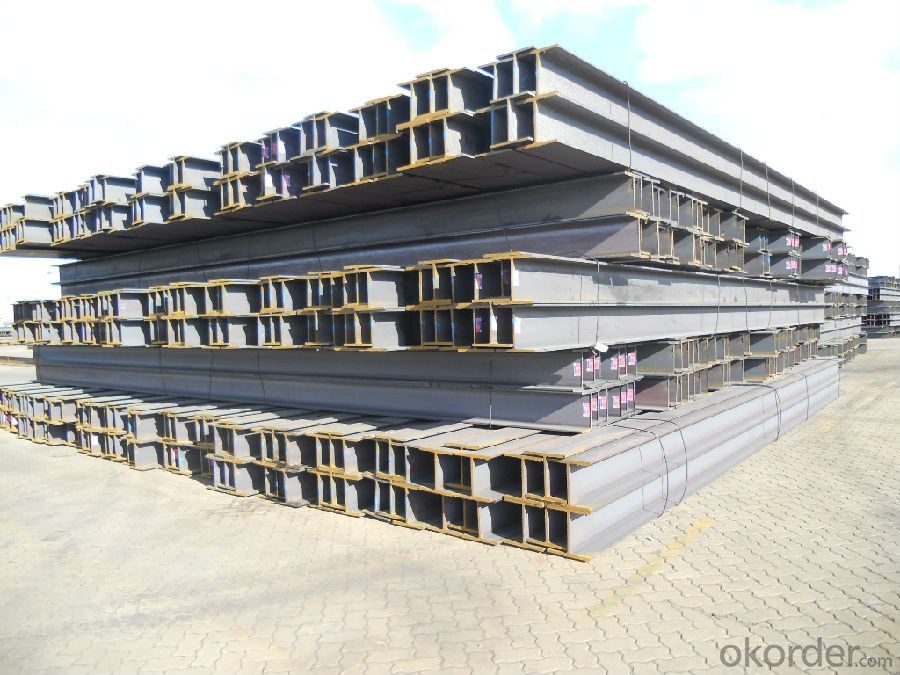
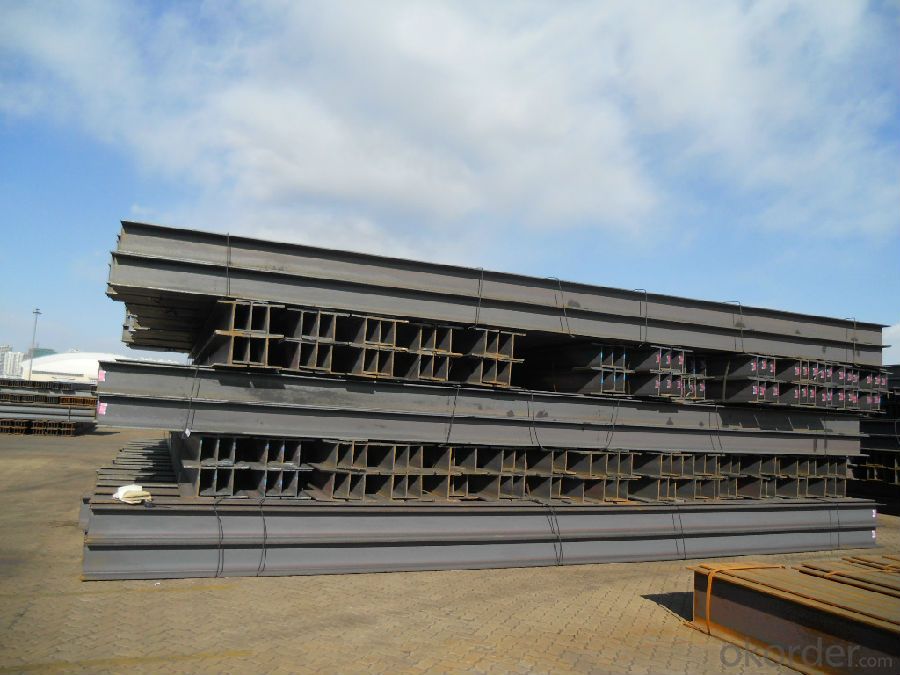
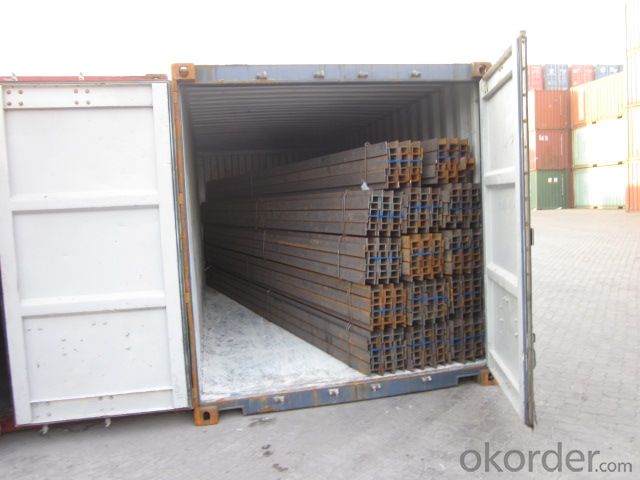
- Q: Can steel H-beams be used for railway bridges?
- Certainly, railway bridges can indeed utilize steel H-beams. Owing to their robustness and longevity, steel H-beams are extensively employed in the construction of railway bridges. These beams possess the capability to bear substantial loads and offer the imperative structural stability that a railway bridge necessitates. Furthermore, the fabrication and installation of steel H-beams are effortless, rendering them a pragmatic option for the construction of railway bridges. Nevertheless, it is crucial to acknowledge that the safety and effectiveness of the railway bridge hinge upon the meticulous examination and endorsement of its design and specifications by trained engineers.
- Q: Are steel H-beams suitable for convention halls?
- Convention halls commonly utilize steel H-beams due to their strength and versatility. H-beams offer exceptional load-bearing capabilities, enabling the creation of spacious and expansive areas within these halls. Moreover, their structural stability is ideal for supporting the substantial weight of equipment, lighting rigs, and other necessary installations. Additionally, the ease of fabrication and installation of steel H-beams makes them a practical choice for extensive projects. In summary, steel H-beams are a dependable and appropriate choice for the construction of convention halls.
- Q: How do steel H-beams perform in extreme weather conditions?
- Steel H-beams are renowned for their exceptional strength and durability, making them applicable to a wide range of uses, including construction and engineering projects. However, it is vital to consider the performance of steel H-beams in extreme weather conditions. In general, steel exhibits a high level of resistance to adverse weather conditions, such as extreme heat, cold, rain, and wind. Specifically, H-beams are engineered to withstand heavy loads and provide structural support, indicating their capability to endure harsh weather conditions. One significant advantage of steel H-beams in extreme weather conditions lies in their resistance to corrosion. Steel possesses inherent resistance to rust and deterioration, and additional protective coatings can further enhance its resistance. Consequently, steel H-beams remain a dependable choice even in environments with high humidity or exposure to saltwater. Under extreme heat, steel H-beams possess a high melting point and can endure elevated temperatures without compromising their structural integrity. This quality renders them suitable for regions prone to wildfires or intense heatwaves. Similarly, in cold weather conditions, steel H-beams retain their strength and stability without becoming brittle or losing their load-bearing capacity. Consequently, they ensure the structural integrity of buildings and infrastructure even in freezing temperatures. Steel H-beams also exhibit favorable performance in extreme wind conditions. Their sturdy construction and effective load distribution make them resistant to strong winds, minimizing the risk of structural damage during storms or hurricanes. Nevertheless, it is crucial to recognize that extreme weather conditions can affect structures differently, necessitating additional precautions based on specific circumstances. Factors such as design, material quality, and proper maintenance play pivotal roles in ensuring the performance of steel H-beams in extreme weather conditions. Overall, steel H-beams generally excel in extreme weather conditions due to their strength, durability, and corrosion resistance. Nonetheless, it is always advisable to consult structural engineers and adhere to appropriate guidelines to guarantee the safety and longevity of structures in such conditions.
- Q: What are the sustainability certifications for steel H-beams?
- Steel H-beams can obtain sustainability certifications such as LEED, Green Globes, and BREEAM. These certifications evaluate the manufacturing process's environmental impact, the energy efficiency of the final product, and the overall sustainability practices of the steel manufacturer. Moreover, specific programs like ResponsibleSteel certification can also certify steel H-beams. This certification specifically emphasizes responsible sourcing and production practices in the steel industry. By meeting certain environmental and sustainability standards, these certifications guarantee that steel H-beams are a greener and more sustainable option for construction projects.
- Q: In the H steel frame, what is the connection between the secondary beams? Welding or high strength bolt connection?
- Steel structure screw connection
- Q: How do steel H-beams perform in structures with dynamic loads from machinery and equipment?
- Due to their exceptional performance and strength, steel H-beams are commonly utilized in structures that experience dynamic loads from machinery and equipment. These beams are specifically engineered to endure and distribute dynamic loads, making them a dependable choice for such applications. The H configuration of these beams provides an advantageous strength-to-weight ratio, enabling them to efficiently support dynamic loads. The flanges of the H-beams are wider than the web, enhancing their resistance to bending and torsional forces caused by machinery and equipment. Furthermore, steel H-beams possess a remarkable load-carrying capacity, guaranteeing their ability to handle the dynamic loads imposed by heavy machinery and equipment. The material properties of steel, such as its high tensile strength and durability, make it highly suitable for absorbing and dispersing the energy generated by dynamic loads. Moreover, steel H-beams exhibit excellent stiffness and rigidity, enabling them to withstand deflection and maintain their structural integrity under dynamic loads. This is crucial because excessive deflection can lead to vibrations that can negatively impact the performance and safety of machinery and equipment. Additionally, steel H-beams have an extended lifespan and require minimal maintenance, making them a cost-effective solution for structures experiencing dynamic loads. The corrosion resistance of steel ensures that the H-beams remain structurally sound even in harsh environments, further enhancing their durability. In conclusion, steel H-beams are highly appropriate for structures that encounter dynamic loads from machinery and equipment. Their advantageous strength-to-weight ratio, load-carrying capacity, stiffness, and durability enable them to effectively withstand and distribute dynamic loads.
- Q: Can steel H-beams be used for supporting industrial silos or storage tanks?
- Yes, steel H-beams can be used for supporting industrial silos or storage tanks. The H-beams provide excellent structural support and stability, making them a suitable choice for such applications. The high strength and load-bearing capacity of steel H-beams make them capable of withstanding the weight and pressure exerted by silos or storage tanks, ensuring the overall integrity and safety of the structure.
- Q: How do steel H-beams perform in oil and gas industry applications?
- Steel H-beams are highly durable and versatile, making them well-suited for various applications in the oil and gas industry. They offer excellent load-bearing capacity and structural stability, making them ideal for constructing platforms, support structures, and equipment frameworks. Additionally, steel H-beams possess high resistance to corrosion, which is crucial in the presence of oil and gas. Overall, steel H-beams are a reliable choice in the oil and gas industry due to their strength, durability, and ability to withstand harsh environments.
- Q: How to process arc H steel?
- See you is an arc in which direction the ah, if it is directly under the arc arc flange flange welded web on the line, the web is on the web flange welding arc. There are two directions are arc. Hope to help you.
- Q: Are steel H-beams susceptible to corrosion?
- Indeed, corrosion can affect steel H-beams. Steel, deriving mainly from iron, has a tendency to oxidize when exposed to moisture and oxygen. This oxidation results in the creation of iron oxide, commonly referred to as rust. Corrosion can manifest on both the surface and interior of the H-beams if moisture becomes trapped inside. Nevertheless, susceptibility to corrosion can be lessened through diverse preventive actions like the application of protective coatings, galvanization, or the employment of stainless steel H-beams. Consistent maintenance and inspections are also crucial in promptly detecting and addressing any indications of corrosion.
Send your message to us
Hot Rolled Steel H-BEAM JIS SS400 GB Q235
- Loading Port:
- Tianjin
- Payment Terms:
- TT OR LC
- Min Order Qty:
- 500 m.t.
- Supply Capability:
- 5000 m.t./month
OKorder Service Pledge
OKorder Financial Service
Similar products
Hot products
Hot Searches
Related keywords
